EdChoice Public Opinion Tracker: Top Takeaways July 2020
The days are counting down until America’s schoolchildren head back to class. What those classes might look like, who will be teaching them and where they will take place are all still up in the air.
Public opinion, and particularly the views of parents and teachers, loom large in school reopening discussions. To try to take the nation’s temperature, numerous organizations have fielded surveys, asking parents and the public writ large what they think about schools and the coronavirus. These include:
• A recent CBS News/YouGov poll that reported nearly half of Americans said they wanted to America’s schools to remain closed with remote learning.
• An Ipsos tracking poll showing a 10 percentage point drop since June among parents who say “they would be willing to send their child to school.” (44%, down from 54%)
• An AP-NORC poll that found 55% of parents are worried about their children falling behind academically.
• A Kaiser Family Foundation poll that reported, “A majority (71%) of the public overall say that public schools in their area need more resources to reopen safely, and 66% of parents say the same about their own child’s school.”
As school districts across the country change course on their reopening plans, it is important to know if the American public and parents have changed course in their opinions.
In this post I share findings based on our most recent Public Opinion Tracker survey wave (in the field July 17–21). Some align with others’ polling, while other questions are unique to our surveys. Our monthly tracking poll reports results are based on a nationally representative sample of adults 18 years and older (N = 2,200), as well as a subsample of parents of school-age children (N = 557).
As always, please let me know at paul@edchoice.org if you have any questions about our data or findings, or if you have ideas for new questions or topics.
1. We have seen parents’ concerns about the coronavirus spike. The percentage of parents that expressed worry about their child being exposed jumped +21 points from June to July. Four out of five parents indicated that sentiment. How will parents act on those concerns in the coming months remains a looming question for schools and public officials.
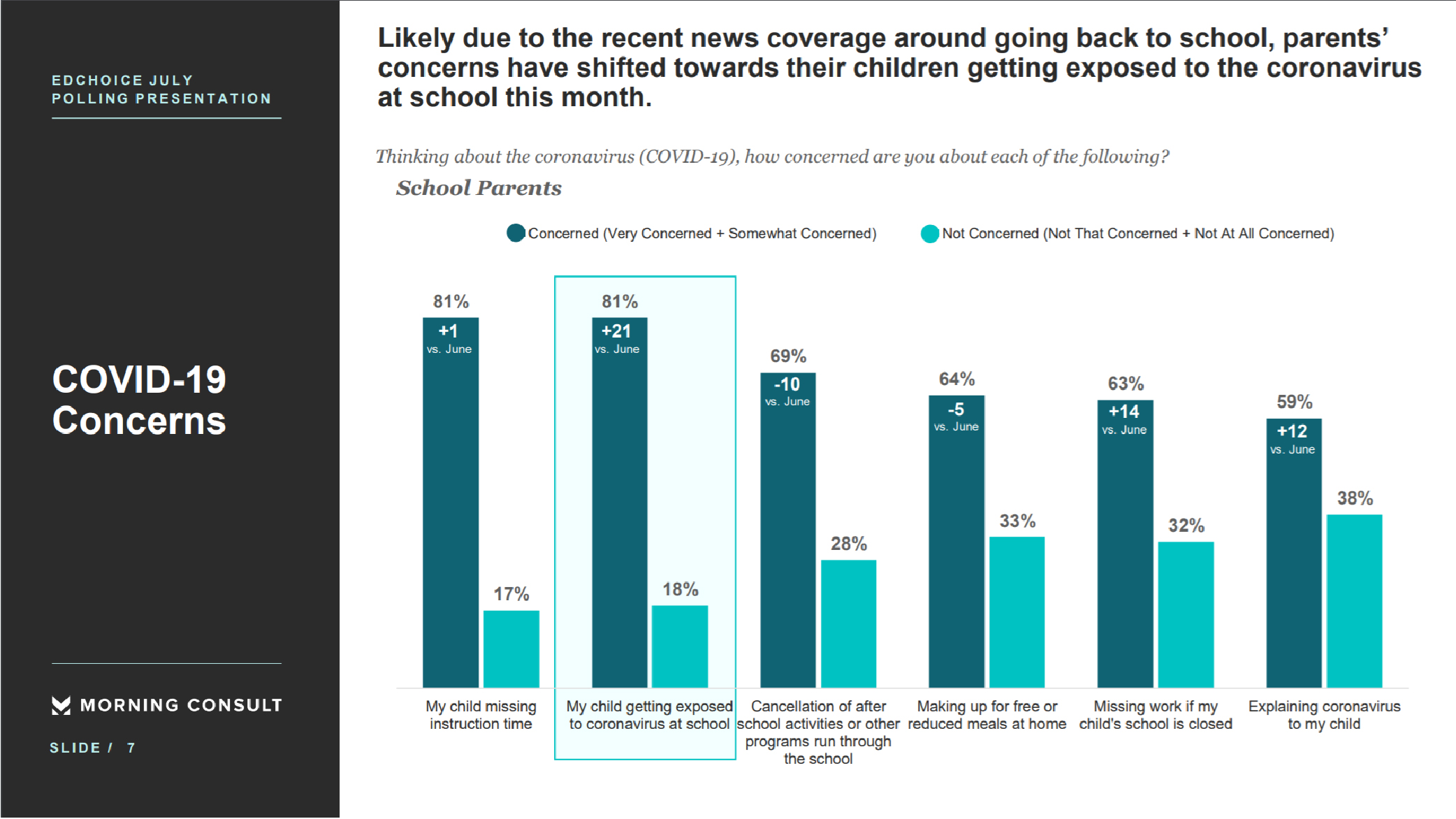
2. From President Trump to Dr. Anthony Fauci to high-profile advocacy groups, we have been exposed to competing messages and themes around the COVID pandemic. We tested different messages about schools reopening– without attribution to who said what. Three in particular resonated. The necessity of additional funding to reopen; protection of children amid uncertainty; and general pessimism about having a “normal” school year generated the strongest agreement amongst respondents. It remains unclear how fixed those messages are for parents and the general public.
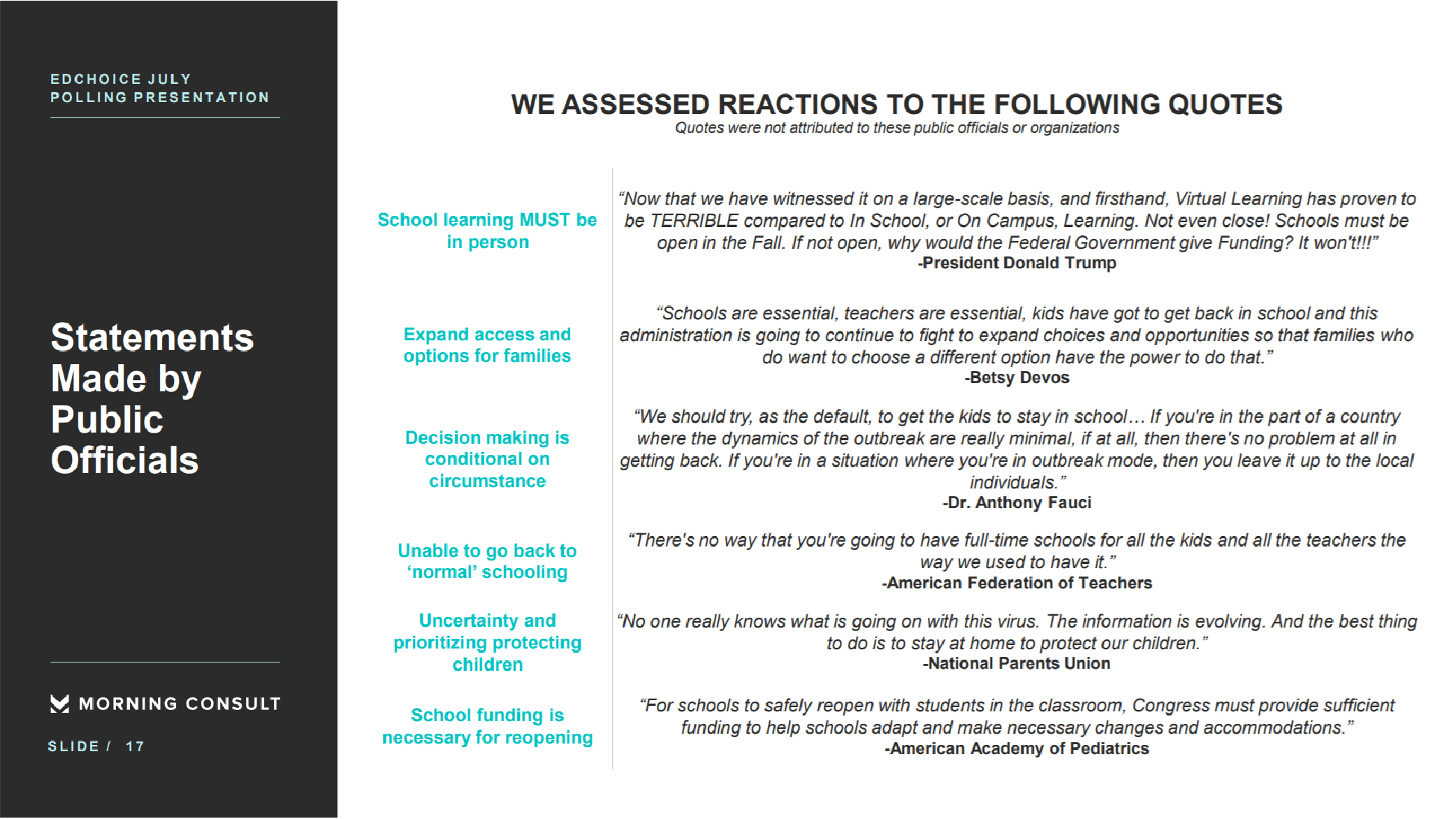
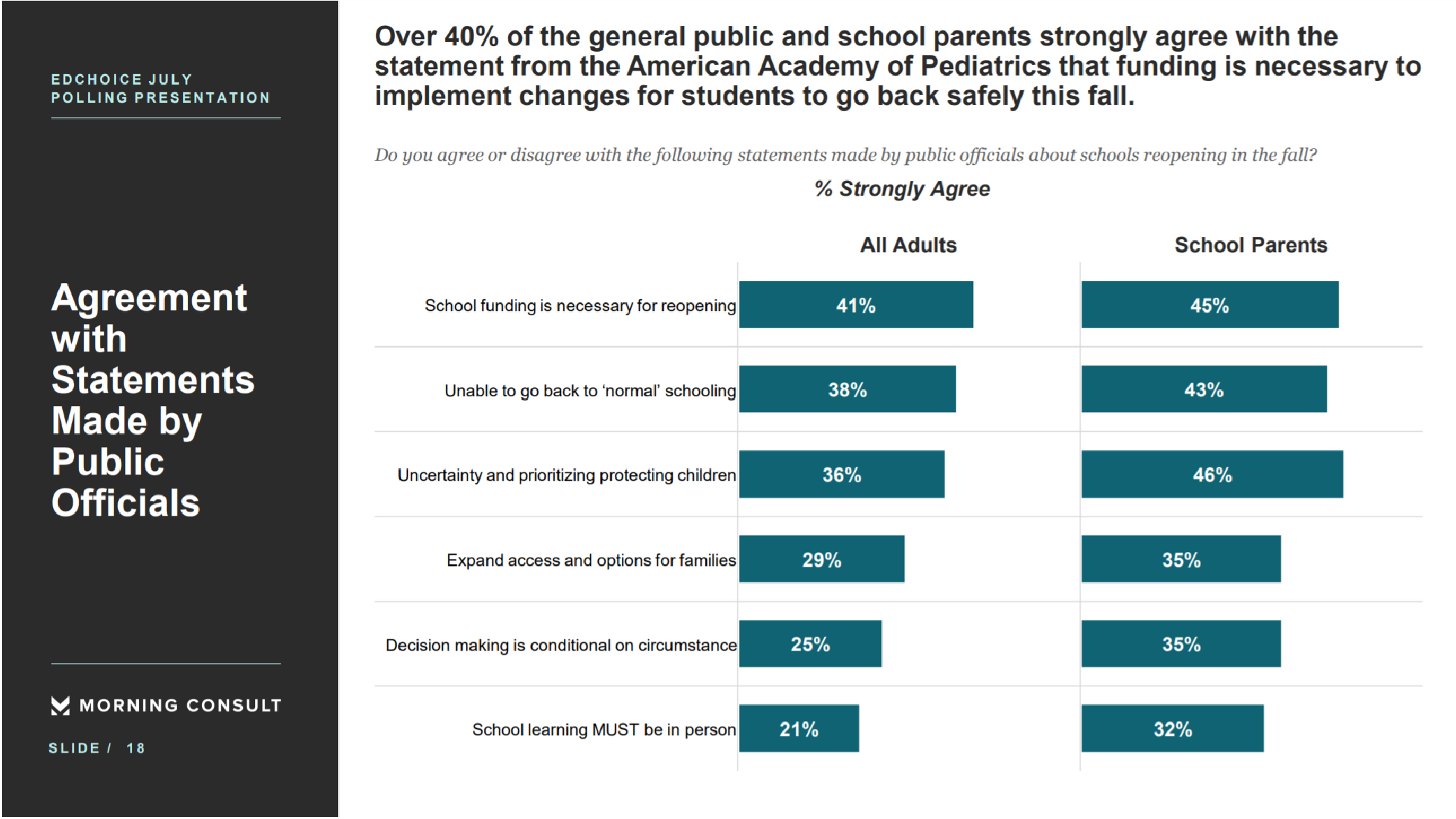
3. Parents clearly want more than one option for their child’s education. A large majority (69%) believe they should have multiple options for schooling this year. And if provided the option by their district, a plurality of parents (43%) say they are at least “very likely” to choose a distance learning option for their child. That figure has increased by +8 points since June. Time will tell in the next two months how these preferences translate into actual decisions and behaviors.
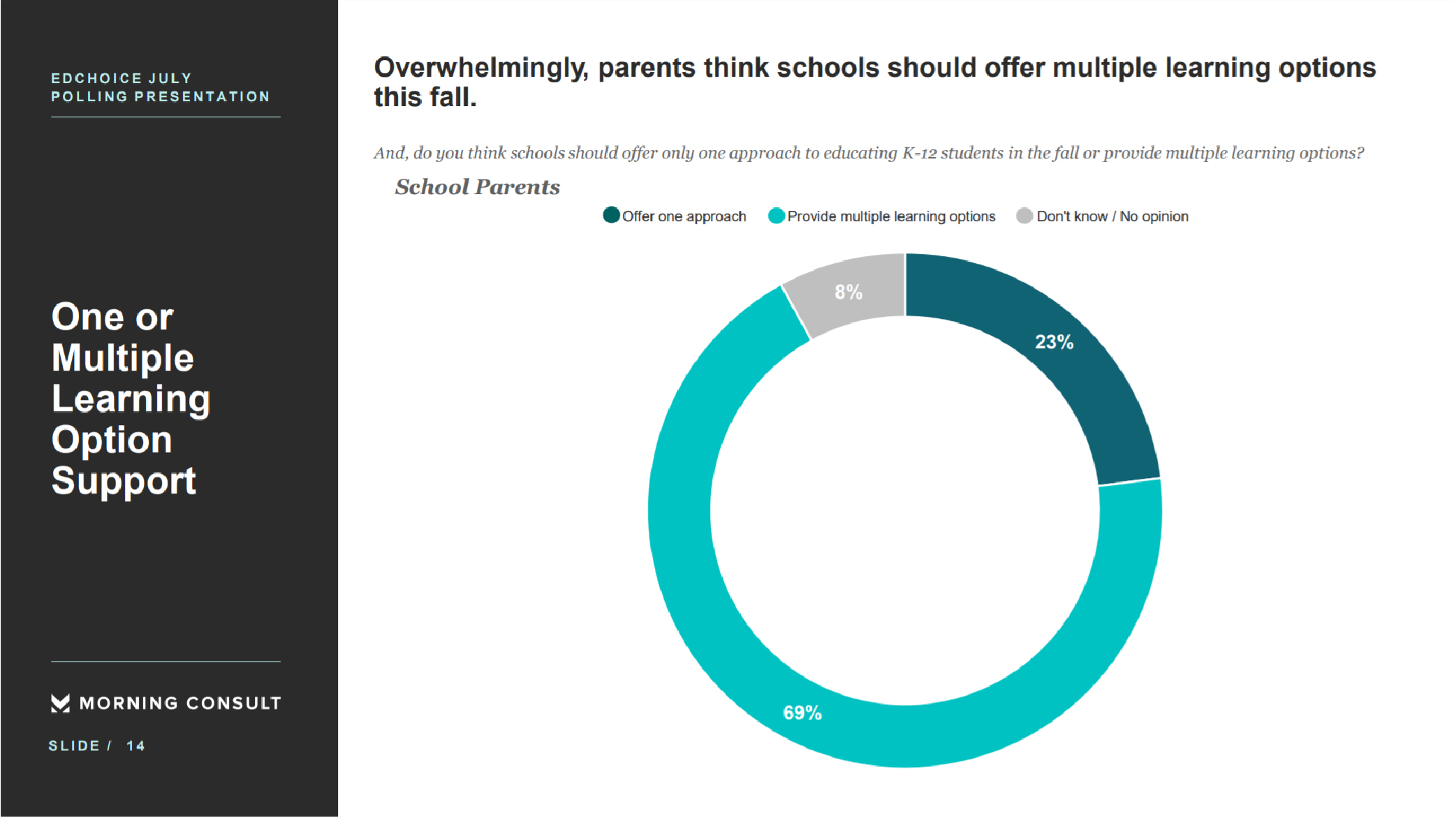
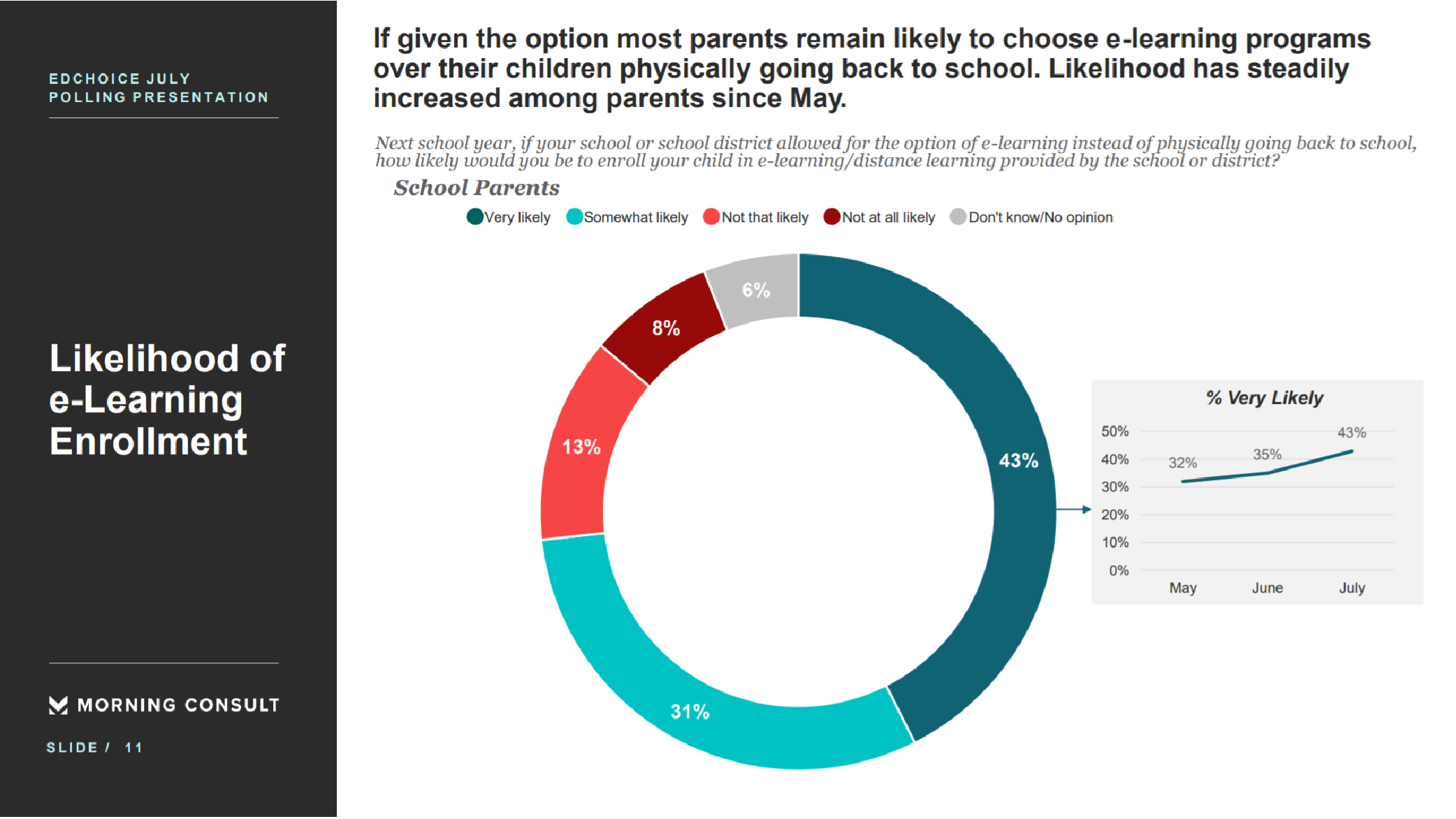
4. Parent favorability for homeschooling increased a lot from June to July. We report a +18 point increase month-over-month in parent support of homeschooling. As the school year approaches, parents are considering more and more what’s best for their children. They have more experience with their children learning at home, and perhaps they feel more comfortable taking more control of what and how their children learn. Regardless of the reasons, attitudes towards homeschooling are an inquiry that we will further explore to assess potential for any longer term shifts in American schooling.
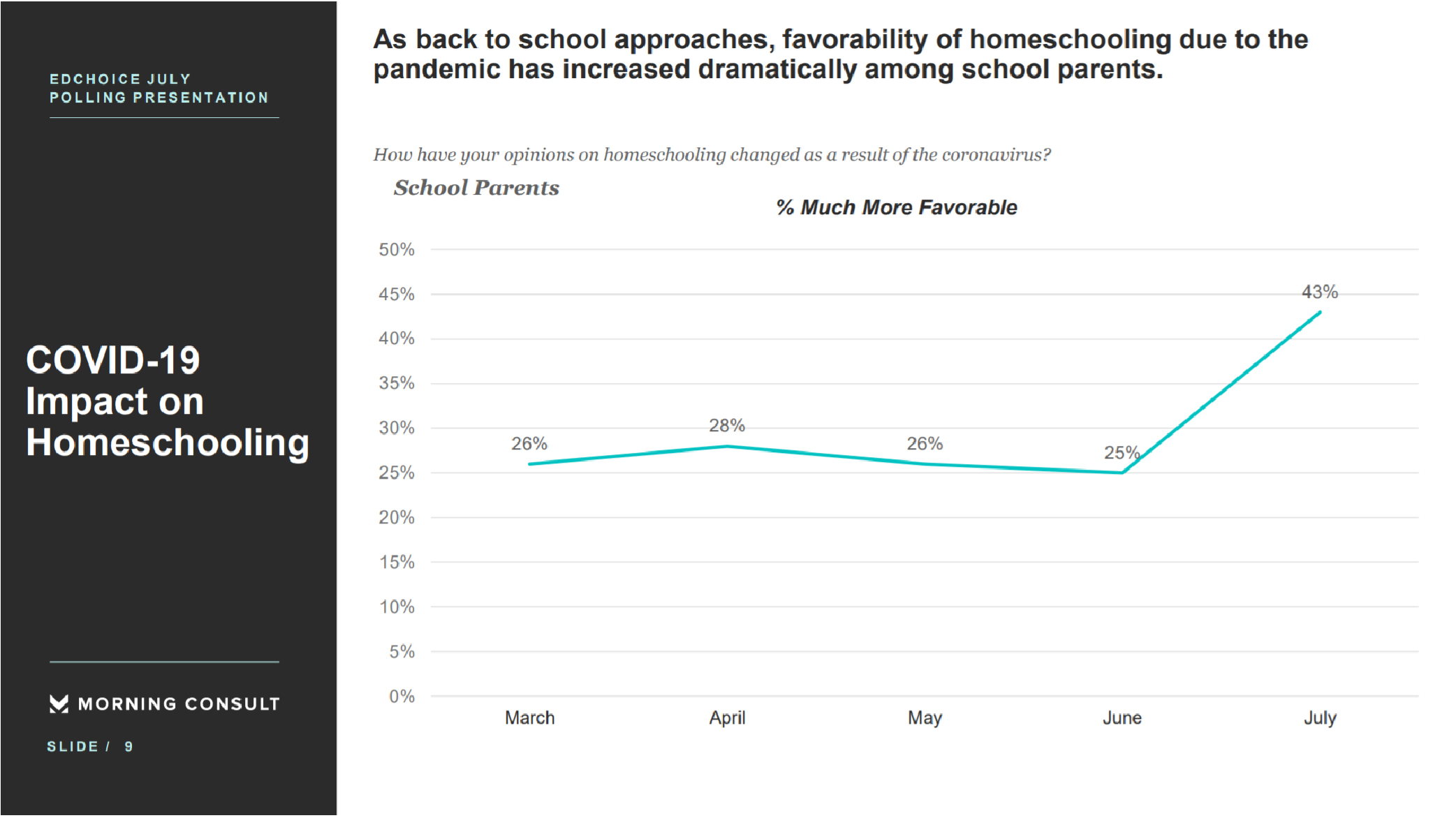
5. Public support for educational choice policies remains high and relatively unchanged since last month. The differences between general support and general opposition are very large, regardless of the type of choice-based policy. Those margins can range from +25 points to +50 points, depending on the observed demographic. Parents in particular tend to be most supportive of choice policies, having support levels around 70-75% and margins of at least +50 points. Approximately one-third to two-fifths of parents “strongly support” any one of these reforms. Generally speaking non-parents and political independents are more tepid in their support and most likely not to have a firm opinion.
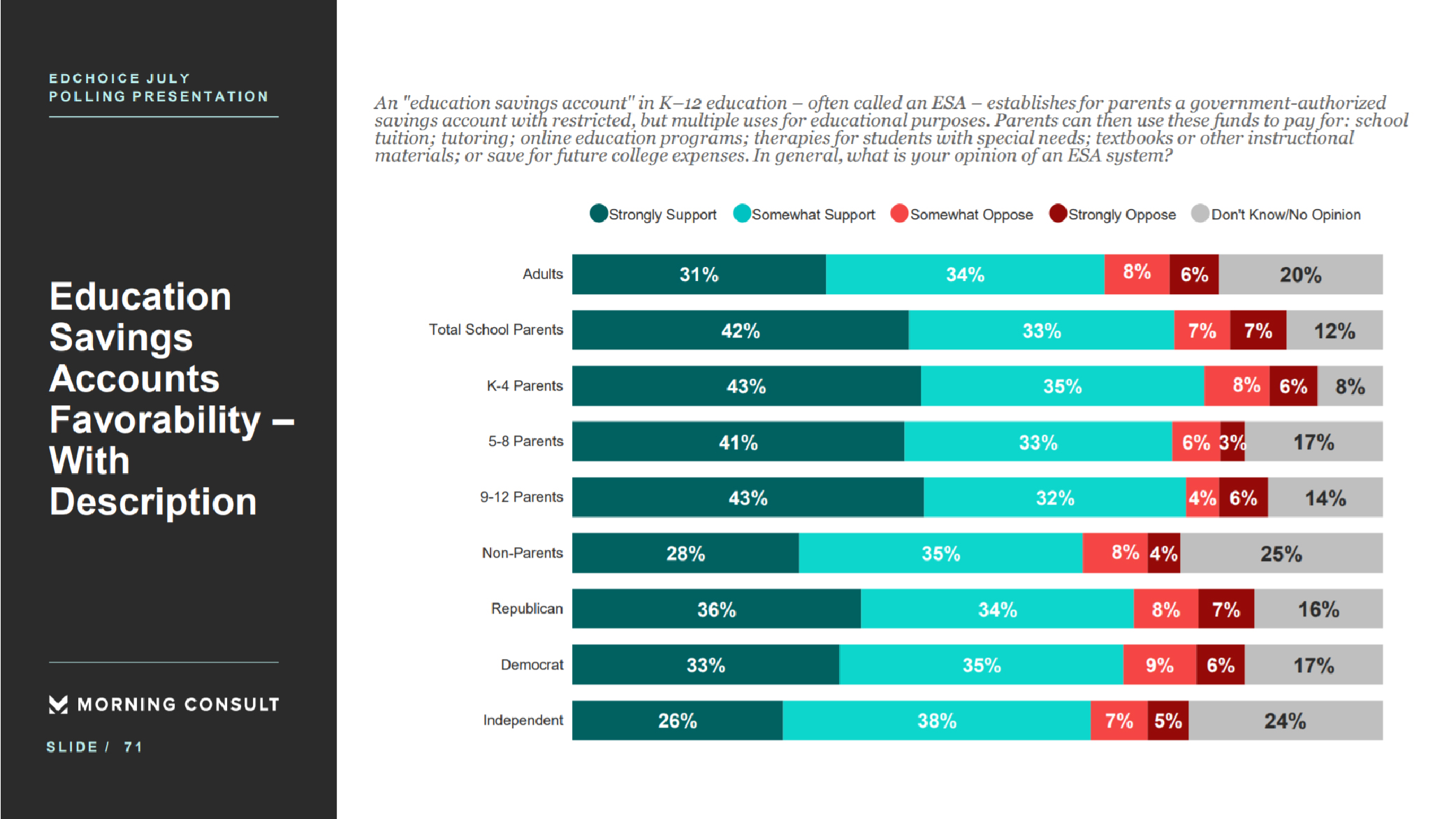
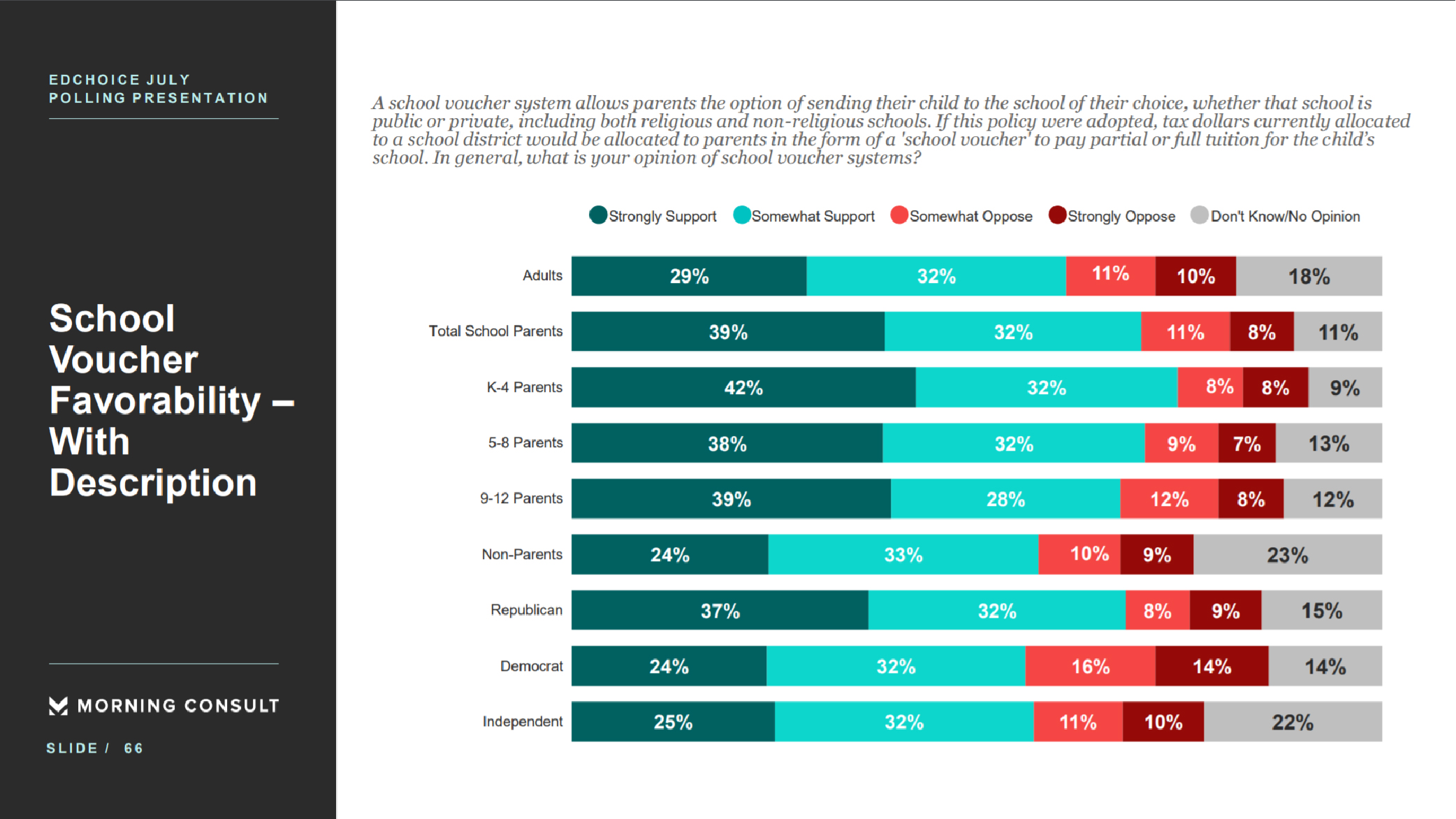
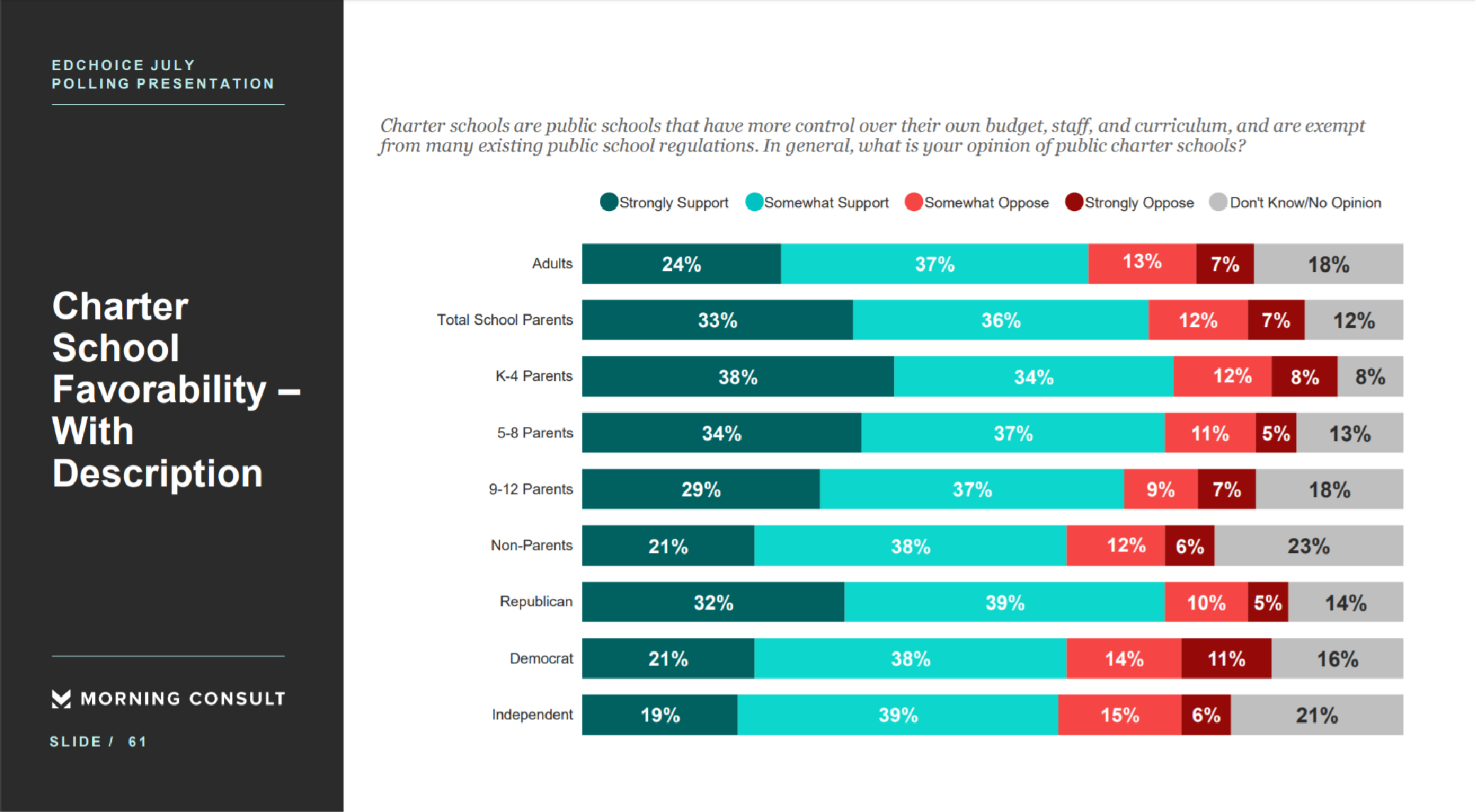
NOTE: A lot of organizations are responding and doing great survey work in the turbulent times we are living in right now. I’ve started to catalog those polls and surveys asking COVID-19 and pandemic questions related to K–12 education. That archive page will be updated on a rolling basis roughly a few times per month or as polls get released. Please don’t hesitate to let me know if I’m missing any to date.




